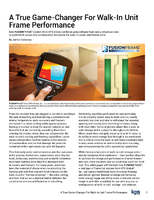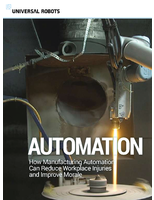Confocal Microscope has controlled light exposure option.
Press Release Summary:
Confocal microscope model C1 is offered with optional Controlled Light Exposure Microscopy (CLEM) control unit that uses 2 laser confocal imaging methods to minimize specimen photo bleaching and optimize laser excitation and detector sensitivity range. When CLEM unit senses lack of fluorescence return signal, it attenuates illumination, reducing unnecessary excitation of fluorophores in background and out of plane of focus objects.
Original Press Release:
Nikon's Controlled Light Exposure Option (CLEM) Extends Digital Eclipse C1 Confocal Live Cell Scanning Time
- Controls Light Excitation and Decreases Specimen Damage -
MELVILLE, N.Y., Nov. 28 -- Nikon Instruments Inc., (www.nikonusa.com), a leader in the development of advanced optical technology, today announced an exclusive new component for the Nikon C1 Confocal Microscope system that allows Controlled Light Exposure Microscopy (CLEM). The control unit uses ultra-fast electronics to reduce specimen photo bleaching and photo toxicity while expanding the confocal unit's signal dynamic range.
"Nikon's CLEM system extends cell life so researchers have more time to observe and record their experiments," said Stan Schwartz, vice president, Nikon Instruments. "When combined with the C1 confocal microscope, users have a single instrument which can be used for the widest possible range of live cell imaging applications."
High sensitivity and high resolution are all critical elements for successful live cell imaging. Nikon's CLEM control unit uses two newly developed laser confocal imaging methods to optimize the laser excitation and detector sensitivity range providing less photo bleaching effects and saturation of the detector signals. When the unit senses the lack of a fluorescence return signal it attenuates the illumination, reducing the unnecessary excitation of fluorophores in the background and out of the plane of focus objects. A second method senses optimum return signal levels and can then attenuate the excitation source reducing the deleterious over-excitation of fluorophores in bright areas or out of the plane of focus objects.
By controlling the excitation of light exposure time with ultra high-speed electronics, the CLEM unit shuts out the excitation light for areas where fluorescent molecules are not present on the specimen. It addition, the unit shuts out the excitation light for areas having more than enough fluorescent molecules on a specimen for image capture.
CLEM obtains intensity information by measuring photometer rise time, and not from end result photon quantities. The product widens dynamic range, which means images can be captured with smaller-than-usual excitation light irradiation without reducing image quality.
The CLEM control unit is an optional add-on system for the C1 that is integrated with the C1 Controller, AOM laser Controller and PC D/A board. The CLEM unit calculates the fluorescent integration signal and exposure time for each pixel in real time, performs AOM high speed shutter control and high speed operation processing based on the amount of acquired fluorescence signal, PMT gain and then outputs the resulting fluorescence signal to the C1 controller's line grabber electronics circuit.
Experimental imaging results indicate that under the standard operating conditions of point scanning laser based confocal microscopes, the CLEM system can extend the imaging time of living cells by two times.
About Nikon Instruments Inc.
Nikon Instruments Inc. is a global leader in the development of advanced optical technology. Its product line includes microscopy equipment, digital imaging, precision measuring and semiconductor wafer-handling equipment. Nikon is committed to providing technologically advanced instruments that offer optimal versatility, performance and productivity. Nikon combines state-of-the-art capabilities with innovative designs to produce optically superior, ergonomically friendly products for cutting-edge scientific research, medical and industrial applications. For more information visit the Nikon website at www.nikonusa.com. Product related inquiries can be directed to Nikon Instruments at 800-52-NIKON




